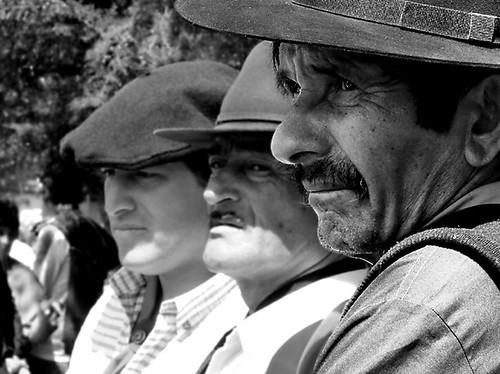Gaucho's Journey - Part 6: Evolución
Further refinement was evidently needed, even though I really liked the way the bergamot was working out in this composition. Thinking about it, there was no other time I enjoyed bergamot that much in a composition, nor did it remind me so clearly of Earl Gray tea before in a scent. Must be the yerbamate base, even though it is not quite a tea leaf.
Concluding that the henna, although interesting and peculiar, does not quite do justice to the other elements and promotes murky qualities, I set for a new mod, now eliminating the henna (or helycrisum for that matter) and arrived at a place that felt, all of a sudden, like a new starting point. I was as they say it – back to square one. I was also a lot clearer on what I wanted to achieve and was very weary of wasting more material… Everything from now on was added scientifically, keeping very careful log of each addition, and making sure I also keep the “pure” original “blank slate” version on hand at all times. It was my new blueprint.
I have to admit, the next few batches, from batch no.6 and on to no. 10 are so similar, that I won’t bore you with the details too much. Suffice to say that each one evolved slowly from the previous one, and to make it simple I’ll just draw a basic set of notes and show you how it grew into what is going to be the perfume of tomorrow (literally, as Gaucho will be launched tomorrow!).
At this point, I have created, in fact, two blueprints – one with and one without angelica.
Mod. 6 had the following notes:
Base: mate, hay, Africa stone tincture, liatrix tincture, angelica absolute
Heart notes: guiacwood, honey, broom, lavender Seville
Top notes: Bergamot, French Neroli
Mod. 7 is the same, less the angelica and plus a new element: a relatively high dosage of galbanum of a very sparkling, green and fresh quality, as well as the sweetly herbaceous rosemary absolute
Base: mate, hay, Africa stone tincture, liatrix tincture, angelica absolute
Heart notes: guiacwood, honey, broom, lavender Seville, rosemary absolute
Top notes: Bergamot, French Neroli, Galbanum
From there we move on to Mod. 8, which is identical to mod. 6 only with the addition of galbanum.
While mod. 9 introduced the idea of a floral note – the quirky jasmine auriculatum absolute - it was still very much lacking the depth and finesse I was searching for. Jasmine auriculatum is a grassy-green jasmine (which also happens to be the only jasmine I dislike when smelled straight up…); Mod. 9 still maintained the presence of rosemary, but with no angelica in sight.
At this point I felt I was walking on a very tight rope above a busy street… Every little thing could distract me from my task: to focus and achieve that exact green perfection I have been so challenged by for so long. I felt that I was almost there, but not quite there yet. Something was missing – something to add true character, to push it forward even just a little more and at the sime time round it off and make it come together for real. My only rival here was myself, with my whimsical impulses to skip to the end...



